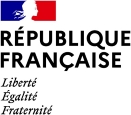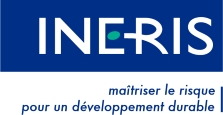The regulatory framework governing the use of bisphenols is becoming increasingly stringent.
National regulation
In France, the national parliament has passed Law no. 2012-1442 of 24 December 2012, banning the use of bisphenol A (BPA) in packaging, containers or kitchen tools likely to come into contact with food. The full text of the law and the documents that led to its adoption can be viewed (in French) here: http://www.assemblee-nationale.fr/14/dossiers/conditionnement_alimentair...
REACH Regulation
Several bisphenols have been identified by ECHA as SVHC (Substance of Very High Concern):
- bisphenol A because of its reprotoxic properties, as an endocrine disruptor for human health and as an endocrine disruptor for the environment
- bisphenol S for its reprotoxic and endocrine disrupting properties for human health and the environment
- 2,2',6,6'-tetrabromobisphenol A because of its carcinogenic properties
Inclusion on this list entails immediate obligations for companies:
- they are responsible for managing the risks associated with this substance
- they must provide their customers and consumers with sufficient information to ensure the safe use of articles containing more than 0.1% (by weight)
- under the Waste Framework Directive, they are obliged to notify to the ECHA SCIP database articles containing this substance in a concentration above 0.1%.
SVHCs are candidates for an in-depth examination with a view to their possible inclusion on the list of substances whose use, covered by the REACH regulation, is subject to obtaining an authorisation for placing on the market in the European Union (Annex XIV).
Following a proposal by France, the European Commission amended Annex XVII of Regulation: since 2 January 2020, thermal paper with a bisphenol A concentration equal to or greater than 0.02% by weight may not be placed on the European market. This restriction does not apply to bisphenol S identified as an alternative to bisphenol A for the production of thermal paper in a study conducted by ECHA.
Classification and labelling
To date, few bisphenols have official harmonised labelling at EU level, only BPA, BPS and TBBPA (CAS No 79-94-7) are listed in Annex VI of the CLP Regulation.
European Sector Directives
On 19 December 2024, the European Commission adopted Regulation (EU) 2024/3190 banning the use of bisphenol A, its salts, other hazardous bisphenols and hazardous bisphenol derivatives for the production of materials and articles that come into contact with foodstuffs (plastics, varnishes and coatings, printing inks, adhesives, ion exchange resins, rubbers, etc.). Unless an exemption is granted, these regulations will apply from 20 July 2026.
On 12th February 2018, the European Commission amended Regulation (EU) No 10/2011 of 14 January 2011 on plastic materials and articles intended to come into contact with foodstuffs: migration into or onto food of BPA from varnishes or coatings applied to materials and articles shall not exceed a specific migration limit of 0,05 mg of BPA per kg of food (mg/kg). BPA is banned in France in packaging, containers or kitchen tools intended to come into contact with food.
Since June 2010, the manufacture and importation of baby bottles made from BPA has been banned in Europe (Regulation (EU) No 321/2011).
In Europe, bisphenol S is authorised in plastics and articles intended to come into contact with food, with a migration rate of 0.05 mg/kg. Other bisphenols are not listed in this regulation and are therefore prohibited in plastics and articles intended to come into contact with food.
Pour plus d’informations : Règlement (UE) n°10/2011 concernant les matériaux et objets en matière plastique destinés à entrer en contact avec des denrées alimentaires
By 12 January 2026, Member States shall take the measures necessary to ensure that water intended for human consumption complies with the threshold of 2,5µg/l for bisphenol A established by European directive 2020/2184.
Moreover, the European Commission has amended the Annex II of the Directive 2009/48/EC on the safety of toys, including a migration limit of 0.04 mg / L for bisphenol A.

